(1073 products available)







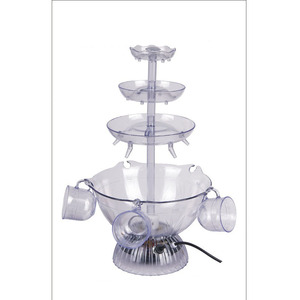



























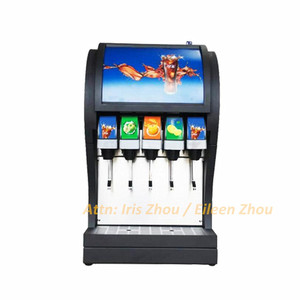





































































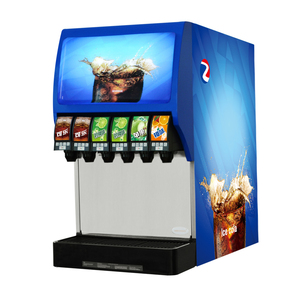









































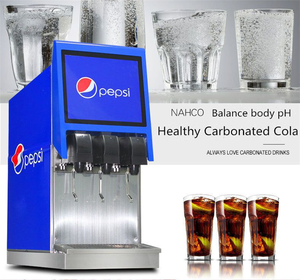





























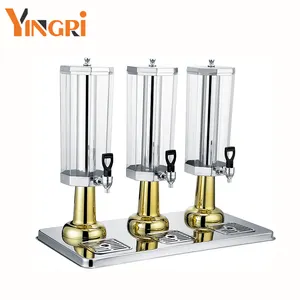





Juice fountains are machines that extract juice from fruits and vegetables. They come in different types to cater to various needs and preferences. Here are some of the most common types:
Centrifugal Juice Fountains
Centrifugal juice fountains are the most common and affordable type. They work quickly and are easy to use. They have sharp, spinning blades that chop the fruits and vegetables into small pieces. Then, the juice is extracted using a fast-spinning strainer basket. The juice is separated from the pulp and seeds. Centrifugal juice fountains are perfect for making juice from soft fruits like oranges, apples, and watermelon. However, they are not the best for leafy green vegetables or wheatgrass. This is because they produce more pulp and less juice. Examples of centrifugal juice fountains are Breville and Hamilton Beach.
Masticating Juice Fountains
Masticating juice fountains, also called slow juicers, extract juice by grinding and squeezing the fruits and vegetables. They work slowly but produce juice with more nutrients and less pulp. Masticating juice fountains are great for leafy greens, hard vegetables, and wheatgrass. They come in vertical or horizontal designs. Vertical masticating juice fountains take up less counter space because they are more compact. Horizontal masticating juice fountains have more versatile attachments for different types of juice extraction. Examples of masticating juice fountains are Omega and Hurom.
Twin Gear Juice Fountains
Twin gear juice fountains are the most advanced type. They have two gears that rotate slowly and squeeze the fruits and vegetables to extract juice. They produce juice with the highest amount of nutrients and have very little pulp. Twin gear juice fountains are perfect for serious juicers who want the best quality juice. However, they are more expensive and take longer to make juice. They are also the hardest to clean and put together. They are best for making all kinds of juice from fruits and vegetables, including the leafy greens. Examples of twin gear juice fountains are Super Angel and Tribest.
When exploring the features and functions of juice fountains, it's essential to look at the components that make them up. The parts of a juice fountain and their functions include:
Feed Chute:
The feed chute is the opening at the top of the juice fountain where fruits and vegetables are inserted. The size of the feed chute varies. Some have a large feed tube that can fit whole apples or oranges, while others have a smaller one that requires produce to be cut into pieces. A bigger feed chute means less prep time since whole fruits can be juiced without chopping. A smaller chute may take more time to cut fruits into quarters or halves but often results in a finer juice extract.
Juice Jug:
The juice jug is a container that collects the juice as it's extracted from the fruits and vegetables. Most juice jugs have measurement markings on the side so users can see how much juice has been made. They also usually have a spout for pouring the finished juice into glasses or bowls.
Pulp Container:
The pulp container collects the dry pulp that is separated from the juice during extraction. It sits below the juicing screen and catches any pulp that falls through. Emptying the pulp container regularly helps prevent overflow.
Motor Base:
The motor base is the heavy part of the juice fountain that houses the motor and other internal components. It provides stability while juicing is in operation.
Cover Lid:
The cover lid is a vital component that protects the internal parts of the juice fountain. It also prevents any accidents from happening while the machine is working.
Juicing Bowl:
The juicing bowl collects the fruits and vegetables as they are being juiced. It is usually made of clear plastic so users can see the process. Most juicing bowls have measurement markings and a spout for easy pouring.
Juicing Screen/Filter:
The juicing screen is a crucial part of any juice fountain. It separates the juice from the pulp by allowing only liquid to pass through. The fine mesh traps solid bits, producing smooth, pulp-free juice.
Cutting Disc/Blade:
The cutting blade is a sharp disc that spins at high speeds. It chops fruits and vegetables into small pieces that can be squeezed for juice. The cutting disc enables whole produce to be juiced quickly without lengthy prep work.
Stabilizing Blades:
The stabilizing blades help stabilize and secure the fruits and vegetables in the juicing bowl so they are cut and juiced evenly. They ensure efficient extraction.
There are different applications of juice extractors across different industries and sectors. Some of the major juice fountain usage scenarios include:
Capacity and Size:
Consider the juice yield and the number of customers. A big juicer with a large juice collector is suitable for high demand. Compact models fit small kitchens. The machine's size should also correspond to the kitchen space available. Choose a model that balances capacity and convenience.
Efficiency and Extraction:
Look for a juice fountain that offers maximum juice extraction and minimum pulp residue. Models with advanced extraction technology should be prioritized for higher juice yields and better nutrient retention. Juicers are rated by their efficiency. Select the model with the highest extraction efficiency.
Easy to Clean and Maintain:
Fruits and vegetables are messy; therefore, the juicer should be easy to clean. Look for juice fountains with removable, dishwasher-safe parts. Select self-cleaning models or those with simple cleaning procedures. Choose juicers with excellent customer support for maintenance assistance.
Durability and Build Quality:
Purchase juice fountains made with high-quality, long-lasting materials like stainless steel and robust plastic. Consider the juicer's reputation, reviews, and warranty. A well-built and durable juicer will serve for a long period.
Safety Features:
The juice fountain should have a safety locking mechanism to prevent accidents. Select models with non-slip feet and overload protection. The juicer should be stable and stop working when the motor is overheated.
Additional Features:
Look for juice fountains with extra features, such as a foam separator that removes excess foam from the juice. A pulp container collects the pulp for easy disposal. Select models with different pulp settings to control the amount of pulp in the juice.
Ease of Use:
Choose a juice fountain with a simple control panel, which makes it easy to operate. The juicer should have a wide feed chute to reduce the amount of fruit and vegetable cutting. Select models that produce juice quickly.
Q1. What are the maintenance tips for a juice fountain?
A1. Juice fountains should be properly cleaned after every use. They should be disassembled and rinsed in water, then detergent should be applied to the parts and rinsed. They should be left to air dry or dried using a clean towel.
Q2. What are the disadvantages of juice fountains?
A2. Juice fountains have some disadvantages, such as they produce a lot of foam. This is because juice with foam is produced due to the high-speed extraction of juice. The foam can make the juice undesirable for some people. Also, juice with foam is not appealing. The juice fountain also wastes juice because the pulp left behind can contain some juice. Additionally, the juice extracted from leafy greens and wheatgrass is low. Juice fountains are not effective for leafy greens and wheatgrass because they are fibrous.
Q3. How to choose a juice fountain?
A3. When choosing a juice fountain, one should consider their needs. Choose a juice extractor that meets the juicing needs. If one needs to juice different types of fruits and vegetables, they should choose a versatile juice extractor. Consider the ease of use and cleaning. Choose a juice extractor that is easy to use and clean. Look at the reviews and ratings of the juice extractor and choose the best rated and reviewed.
Q4. What are the two types of juice fountains?
A4. There are two types of juice fountains, the centrifugal and masticating juice extractor. Centrifugal juice fountains extract juice from fruits and vegetables through a spinning blade. The masticating juice extractor, also known as the slow juicer, extracts juice by chewing the fruits and vegetables to produce juice. The masticating juice extractor is more popular than the centrifugal juice extractor because it produces more juice and is more efficient.
Q5. What does a juice fountain do?
A5. Juice fountains extract juice from fruits and vegetables. They separate juice from pulp, producing nutritious juice that is rich in vitamins and minerals. Juice fountains are different from juicers. They are faster than juicers and produce juice from fruits and vegetables at different speeds.